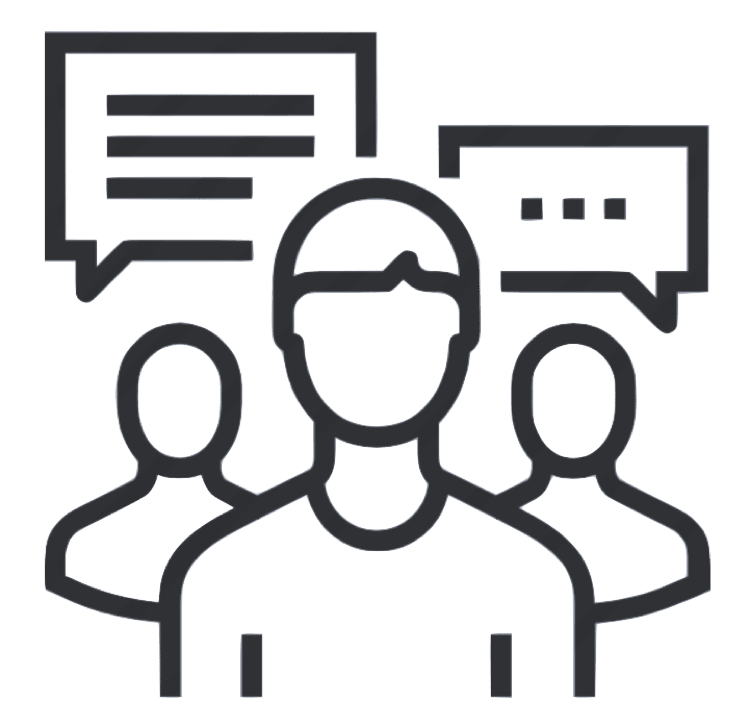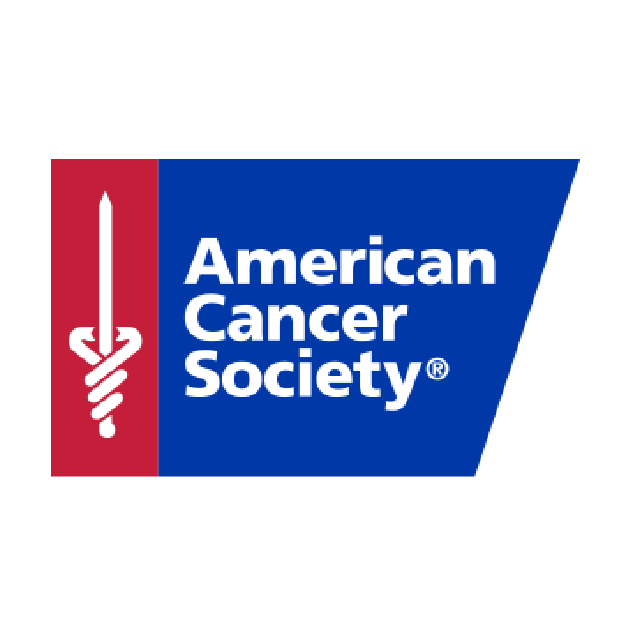Capstone – Project
The American Cancer Society’s Interconnectedness
A Collaboration Between
We are looking for creative, brilliant, motivated, and passionate Zoomers – the leaders of tomorrow – to help the American Cancer Society discuss how to fold this overarching philosophy of “Interconnectedness” – of socially responsible cohesiveness – into everything we do — from network fundraising products to corporate engagement to grassroots volunteerism to distinguished events and more.
Challenge wise, the American Cancer Society’s project would like a group of Gen Z participants to assess the tenets of Interconnectedness as it pertains to its impact on our life-saving mission, challenging our college participants how best our charitable organization can raise our communities’ voices and increase our partners’ support to not just sit by but rather stand up – and stand by – Generation Z’s hopes, dreams, and desires for a better tomorrow. This is about engaging the American Cancer Society with an up and coming generation not necessarily thinking of our 108-year old charity as part of their personal values and career goals.
Start with an open-ended conversation about Interconnectedness between leaders and members of our communities inspiring a long overdue and impact-making philosophy across our charity’s four pillars of advocacy, discovery, patient support, and development in our critical fight against a terrible disease.
A project success would be launching any deliverables or efforts that are warmly received by the hyper-critical, brilliant, and highly motivated Gen z audience. Early results would be modest lead generation numbers on digital channels, fundraising increases, as well as recruitment for the American Cancer Society’s charitable “products.”
Project Topics

Corporate Social Responsibility
International Affairs
Marketing

Org Culture, D&I
Company Information
| Company | American Cancer Society |
| HQ | Georgia |
| Revenue | 500,000,000+ |
| Employees | 2500+ |
| Stage | Large Enterprise |
| Hiring Potential | Follow-on Projects, Formal Internship, Entry Level Full-Time |
| Website | https://www.cancer.org/ |
Company Overview
Experiential Learning Program Details
| School | Butler University |
| Engagement Format | - |
| Course | Strategic Communication Capstone |
| Level |
|
| Students Enrolled | 14 |
| Meeting Day & Time | 3/14/22 - 4/29/22 Asynchronous |
| Student Time Commitment | 4-7 Hours Per Week |
| Company Time Commitment | 2 Hours |
| Duration | 5.57 Weeks |
Program Timeline
| Touchpoints & Assignments | Due Date | Type | |
|---|---|---|---|
|
Course Begins
Course Begins |
March 14th, 2022 | Event na | |
|
Client Kick-off Meeting
Client Kick-off Meeting
Submit Client Notes here.
|
March 18th, 2022 | Submission Required submission-required | |
|
Client Check-In Meeting
Client Check-In Meeting
Submit your Client Notes here.
|
April 8th, 2022 | Submission Required submission-required | |
|
Final Strategic Communications Plan
Final Strategic Communications Plan
Submit your final PPT decks here.
|
April 28th, 2022 | Submission Required submission-required | |
|
Course Ends
Course Ends |
April 29th, 2022 | Event na | |
|
Client Evaluation
Client Evaluation
Clients will submit their evaluations of the final presentations here.
|
April 29th, 2022 | Evaluation evaluation |
Key Project Milestones
-
March 20, 2022 - Milestone One: Communications & Marketing Research
At the start of the strategic communication planning process, research is conducted to identify the right problems to solve and the best processes to determine solutions. This involves scanning the external environment, collecting data, and evaluating existing communication campaign efforts.
For this milestone, students will collect and analyze primary and secondary research data to build an evidence-based presentation deck to build a case for your strategic communications plan, which will include the following:
CLIENT’S PROBLEM/OPPORTUNITY
Based on the students’ review of CapSource materials, and kick-off meeting with the client, students will state the problem/opportunity presented.
BACKGROUNDER
External Environment
- The economic, political, and social environment within which your client operates — how are they situated within this context?
- Impact of current events on the strategic communication function of the organization.
State of the Industry
- Types of organizations, companies, sales, distribution patterns
- Control and regulation, profit patterns, growth patterns, audience demand
- Historical context, technological advances, trends
Market Share and Competition
- Market share and potential in terms of dollars, clients, services, etc.
- Competitors and their market share and potential
Products and Services
- Product and sales offerings
- Significant prior marketing and sales campaigns
- Noteworthy influencers and/or evangelists
SWOT ANALYSIS
Based on information gathered for the Backgrounder, students will list any potential Strengths, Weaknesses, Opportunities and Threats.
SITUATION ANALYSIS
Students will redefine the problem/opportunity based on research conducted. How does the situation present itself? Students will use actual numbers as much as possible. Then, they will identify and assess any potential issues or barriers when it comes to addressing the problem/opportunity for the client.
CORE PROBLEM OR OPPORTUNITY
In one concise sentence, students will state the central core of the problem or opportunity.
Suggested Deliverable:
- This research report should be written from the perspective of a strategic communications agency. The audience is Happy Valley Meat Company.
- It will be delivered as a presentation deck, using the client’s branding.
-
April 3, 2022 - Milestone Two: Customer Information Gathering
The most successful strategic communication campaigns involve thoughtful planning and creative thinking. However, these efforts are in vain if they do not take the client’s target market into consideration.
For this milestone, students will map out the customer journey for each key public based on the problem/opportunity presented by the client. This will be informed by an overarching “big idea” to structure the strategic communications campaign, and anchored by a Unique Value Proposition (UVP).
BIG IDEA (see p. 116 in text for example)
- A one-sentence strategy statement that leads the strategic communications campaign.
- The big idea strategy in more detail (1-2 paragraphs).
- Visual representation.
- Slogan/Hashtag.
KEY PUBLICS (see p. 132-133 in text for example)
- 2-4 key publics listed based on conversations with Greenspan Consulting / Fabulous App.
- Information regarding:
- Their self-interests
- Opinion leaders
- Preferred channels
CUSTOMER JOURNEY
- For each key public, students will describe:
- All potential touchpoints (both online and offline)
- Ideal customer actions
- Emotions and motivations behind these actions
- Obstacles and pain points that may get in the way of achieving your big idea
UNIQUE VALUE PROPOSITION
- Headline: The benefit of the proposed Big Idea
- Subheadline: More information about the benefit
- Paragraph: Detailed explanation of what the strategy offers, how it serves key publics, and the why.
Suggested Deliverable:
- This report should be written from the perspective of a strategic communications agency. The audience is Happy Valley Meat Company.
- It will be delivered as a presentation deck, using client’s branding, and adding to the deck from the first milestone.
-
April 10, 2022 - Milestone Three: Goals, Objectives, Strategies, & Tactics
Goals, objectives, strategies, and tactics are the crux of any strategic communication plan. Without these thoughtfully planned and implemented, there is no baseline to work off of, nor is there any structure from which to carry out your big idea.
For this milestone, students will craft the goals, objectives, strategies, and tactics of the proposed campaign.
GOALS
- One sentence statements that highlight the overall result needed to solve the problem or seize the opportunity. Does not have to be quantified.
OBJECTIVES
- Statements of the specific results that lead to achieving the goal. Should be SMART: Specific, Measure, Attainable, Realistic, and Time-bound.
- Evaluation criteria and tools should also be included.
STRATEGIES
- These identify HOW a public can fulfill an objective and the specific channel(s) through which the public will be motivated to take action.
- There should be multiple strategies for each public.
TACTICS
-
- These are WHAT will be accomplished via creative elements and tools to deliver messages through specific channels.
- There should be multiple tactics to support each strategy.
Suggested Deliverable:
- This report should be written from the perspective of a strategic communications agency. The audience is Happy Valley Meat Company.
- It will be delivered as a presentation deck, using client branding, adding on to the previous milestone submissions.
-
April 17, 2022 - Milestone Four: Calendar & Tactic Deliverable
Calendars are a strategic communication professional’s best friend. It allows all team members involved to stay on the same page when it comes to deliverables, and it’s the documentation needed to keep clients informed of the status of the campaign.
For this milestone, the students will develop a calendar of your proposed project deliverables for the campaign based on the key publics and tactics you crafted in previous assignments. You will also select one of these tactics based on your meeting and the students will deliver it in real-time.
Suggested Deliverable:
CALENDAR
- Should be in Gantt chart format
- Shows when each tactic ends and begins in a time continuum
- Organized by key public and strategy to show the work required
- Provides enough lead time for production and other arrangements
TACTIC DELIVERABLE
- The specific tactic you’ve agreed on with the students, and which objective and strategy it stems from.
- The specific problem/opportunity this tactic addresses
- How this tactic ties into the proposed solution
- How the tactic will be implemented
- The benefits of this tactic
-
April 28, 2022 - Milestone Five: Final Strategic Communications Plan & Presentation
For this milestone, students will submit their completed presentation deck with all components integrated. They will also present learnings to the client and fellow classmates.
Suggested Deliverable:
FINAL STRATEGIC COMMUNICATIONS PLAN
Will consist of the following:
- Introduction/Executive Summary: A brief introduction for the client (e.g., purpose, contents, key findings)
- Finalized version of Project Assignment 1: Communications & Marketing Research
- Backgrounder
- SWOT Analysis
- Core Problem or Opportunity
- Finalized version of Project Assignment 2: Customer Information Gathering
- Big Idea
- Key Publics
- Customer Journey
- Unique Value Proposition
- Finalized version of Goals, Objectives, Strategies, Tactics
- Finalized Calendar
- Tactic Deliverable Case Study: includes any updates that may have occurred since submitting the initial assignment
- Recommendations: Based on lessons learned and what students gathered from research and conversations, offering overarching recommendations on how the client can move forward with implementing the plan.
- Conclusion: Wrap up in a paragraph or less the key takeaways from the plan.
FINAL PRESENTATION
- Each team will be allotted a maximum of 20 minutes to present their plan, plus a brief 10 minute period to respond to questions.
- Since full details are included in your final presentation deck, only the most intriguing findings from the final report will be presented.
Project Resources
- Interconnectedness Internal Manifesto
- https://capsource-bucket.s3.us-west-2.amazonaws.com/wp-content/uploads/2022/03/18202524/Interconnectedness-American-Cancer-Society-Marketing-Teams-Project-Summary.pdf
- https://capsource-bucket.s3.us-west-2.amazonaws.com/wp-content/uploads/2022/03/18202716/Interconnectedness-Project-Dr.-Melanie-McNally-Generation-Z-Psychologist-1.pdf



